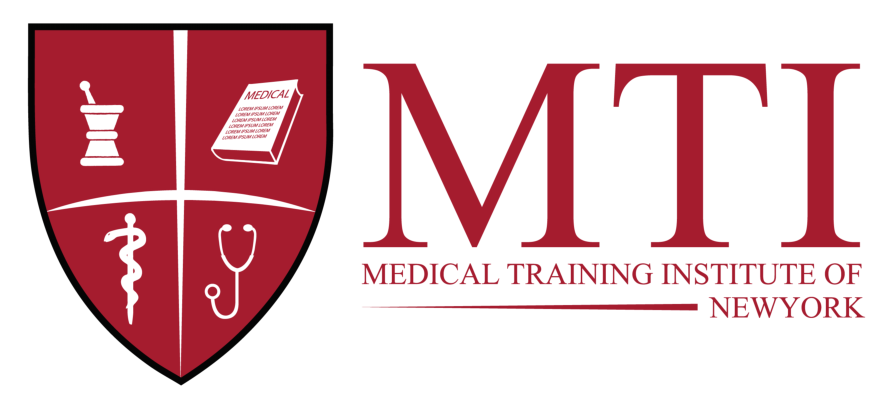Phlebotomy is a word that often brings to mind needles, blood, and anxiety. For many people, the prospect of having their blood drawn is enough to make them feel uneasy, with some experiencing an intense fear or dread at the thought. While phlebotomy is a routine and essential part of healthcare, it’s not uncommon for individuals to feel anxious about the process. Whether it’s the fear of pain, a needle phobia, or simply a bad past experience, the anxiety surrounding blood draws can be very real. At the Medical Training Institute of New York, we understand these concerns and take great care in training phlebotomists to not only master the technical skills but also to ensure patients feel as comfortable and relaxed as possible.
One of the most common reasons people fear blood draws is the phobia of needles, known as trypanophobia. This fear can cause extreme discomfort, leading to avoidance of necessary medical care or a heightened anxiety response. Even for those without a specific phobia, the sight of a needle or the thought of blood being drawn can cause feelings of dread or discomfort. Another factor contributing to anxiety is the fear of pain. Though the actual prick of the needle is usually brief, the anticipation can make the process feel more daunting. People often fear the unknown—how much it will hurt, how long it will take, or whether they will feel faint afterward.
For others, the loss of control plays a significant role in their anxiety. Phlebotomy involves an intimate, hands-on procedure where blood is drawn directly from the body. This can make people feel vulnerable, particularly when they have no control over the process. Some may also have bad memories of past experiences where the procedure didn’t go as smoothly as expected, such as multiple attempts to find a vein or the appearance of bruising after the draw. These negative experiences can reinforce the fear, making future blood draws even more stressful.
The phlebotomists trained at the Medical Training Institute of New York are well aware of these concerns and take specific steps to help patients feel at ease. Building rapport is one of the most effective strategies phlebotomists use. By speaking with patients, explaining the procedure, and maintaining a calm, reassuring demeanor, they help reduce the patient’s anxiety. A friendly conversation can go a long way toward making a potentially stressful situation feel more manageable. Phlebotomists also employ distraction techniques, engaging patients in conversation or encouraging them to focus on something else, such as deep breathing, listening to music, or even thinking about something pleasant.
Another important aspect of patient care is the phlebotomist’s technique. Gentle handling of the needle, careful selection of the appropriate vein, and choosing the right needle size are all part of minimizing discomfort and reducing the risk of bruising or other complications. The aim is to make the experience as quick and painless as possible, ensuring the patient feels more confident and less anxious in future encounters. Phlebotomists are trained not just in the physical skill of drawing blood but in the emotional and psychological aspects of patient interaction.
Patient preferences also play a vital role in alleviating anxiety. Phlebotomists are trained to accommodate individual needs, whether it’s taking extra time to help a patient feel comfortable, allowing them to lie down during the procedure, or offering smaller needles for those particularly sensitive to pain. Personalizing the experience can make a significant difference, helping patients feel more in control of the process.
For individuals who struggle with anxiety around blood draws, there are several coping strategies that can make the experience less stressful. Communicating openly with the phlebotomist is key—letting them know about any fears or concerns can help them tailor their approach. Practicing deep breathing during the procedure can also be calming, as it helps the body relax and reduces the overall sense of panic. Looking away from the needle and the process itself can also help those who feel faint or nauseated at the sight of blood. And for those who need extra support, bringing a friend or family member along can provide an additional layer of comfort and reassurance.
While the anxiety around blood draws is understandable, it’s important to remember why phlebotomy is such a critical part of healthcare. Blood tests provide valuable information about a patient’s health, allowing doctors to diagnose conditions, monitor treatments, and ensure overall well-being. From detecting infections to managing chronic diseases like diabetes, the role of phlebotomy in modern medicine is indispensable. Beyond diagnostics, phlebotomy also plays a crucial role in blood donation, helping save lives in emergency situations and supporting patients in need of transfusions.
At the Medical Training Institute of New York, we are committed to preparing future phlebotomists with both the technical and interpersonal skills necessary to make blood draws as comfortable and efficient as possible. Phlebotomists are often the unsung heroes of the healthcare world, quietly and professionally carrying out a task that is vital to patient care. By approaching each patient with empathy, care, and professionalism, they help reduce the anxiety surrounding blood draws and ensure that this essential procedure is as stress-free as possible.
Phlebotomy may trigger anxiety in many individuals, but with the right training and patient-centered approach, phlebotomists have the power to transform a fearful experience into a manageable one. Whether it’s through building trust, using distraction techniques, or simply providing a reassuring smile, these healthcare professionals play an essential role in helping patients overcome their fears and receive the care they need. For those interested in joining the healthcare field, becoming a phlebotomist offers a rewarding opportunity to make a real difference in people’s lives, one blood draw at a time.





2 Responses to Facing the Needle: Understanding Phlebotomy and Easing Anxiety Around Blood Draws